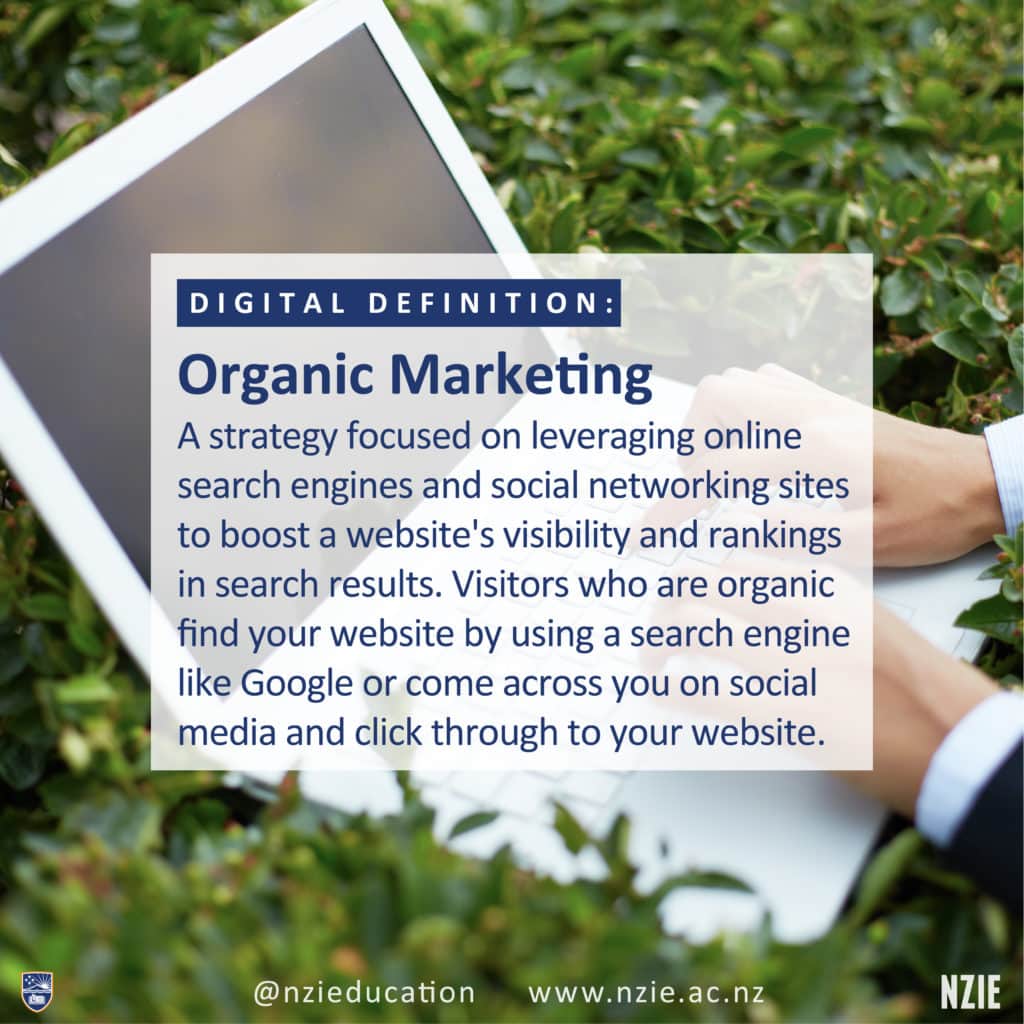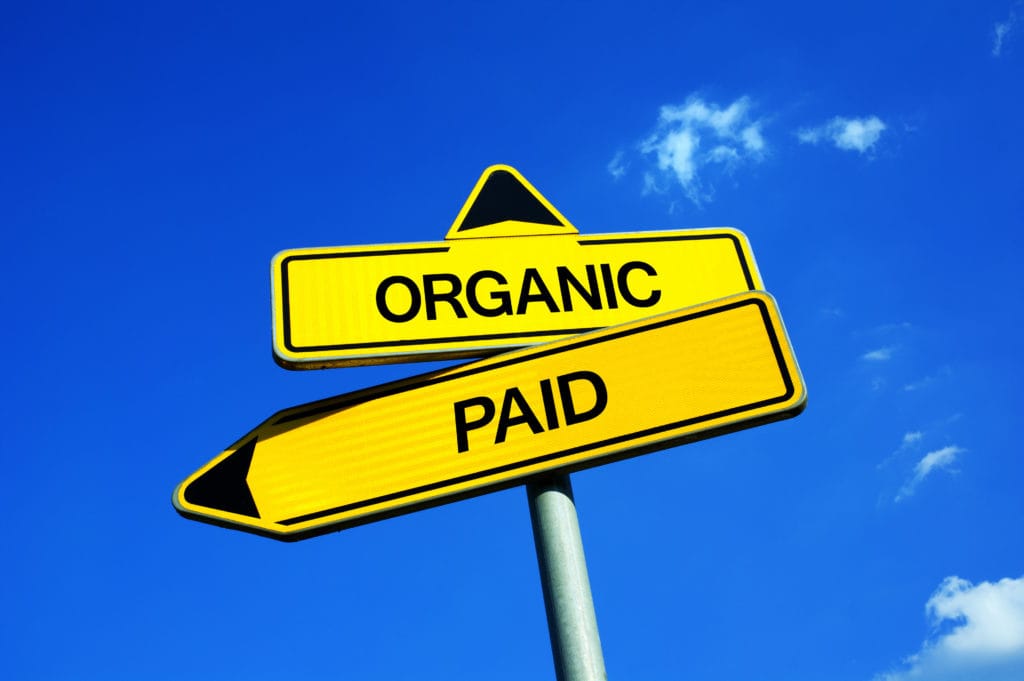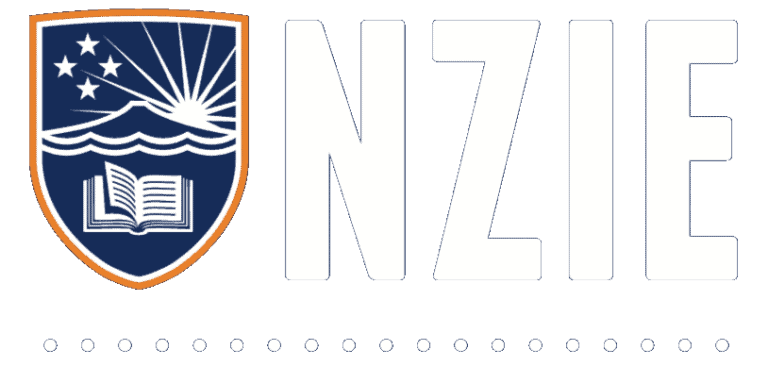The biggest challenge marketers face today
Arguably one of the biggest challenges’ marketers face today is trying to meet the demands of providing marketing services that are Good, Cheap & Fast. But in the real world, yes this includes the digital marketing world too, realistically you can only be TWO. Do you agree?
Ollie Such CEO of Good2Gro encapsulated the problem perfectly in a nutshell:
“The challenge for many business owners is whether paying via time [the long game with organic] or via money, [pay to play with ads]. When the ROI [return on investment] isn’t coming ‘soon’ it’s difficult to justify.”
What’s the difference between organic marketing and paid ads marketing?
ORGANIC MARKETING
The term “organic traffic” is used when referring to visitors that land on your website without coming through a sponsored ad. For instance, visitors who find your website by using a search engine like Google. Have you noticed it’s difficult for newer websites to show up on the first pages of Google. Especially when typing in keywords and key phrases that don’t include their brand name.
Organic can also be applied to social media, where potential customers/clients find your business via Facebook, Instagram, LinkedIn, Pinterest, TikTok.
Depending on whichever platforms you are targeting and have a business presence on. Visitors click an article link that you have shared online which sends them to your website generating organic traffic.
Looking for organic marketing strategy short courses? Check out Social Media or SEO strategy short courses here
PAID MARKETING
Also known as ‘pay-to-play’ is exactly as the title suggests. You pay money to ad platforms to generate traffic and leads. Some of the main paid channels are Google Ads, Facebook and Instagram, Youtube Ads, and LinkedIn. A paid ads strategy can be particularly good for retargeting traffic that has visited your website.
Have you ever noticed a time where you went onto a website but didn’t purchase anything or sign up? However, you then started seeing ads from that business popping up on social media, and other places across the web? That is not coincidental – it is the result of retargeting ad campaigns in action.

Good, Cheap, Fast - you can only choose two
Why you can only have two and not all three; good, cheap and fast
Some people don’t realise that good services usually aren’t cheap. Furthermore, quality takes time, skill and expertise to harness. As a result, the pricing often reflects that. Additionally, if you’re after good AND fast, you can forget about the word cheap all together. Good quality is usually in high demand, which instantly scraps the idea of fast. For instance, you might have to join a waitlist unless you’re willing to pay a premium price. Specifically, just to achieve a faster turnaround/service delivery time.
An experienced specialist who knows their expertise can deliver efficiently. And with Paid Marketing you can get instant results. On the other hand, to get instant results you need a big enough ad budget to cater for it. Moreover, the paid ad results stops when you stop paying and funding the ad campaigns. Ultimately meaning that the combined total for good and fast will come with a higher price tag.
Fast and Good
Good things take time – you can’t expect results instantaneously. Whilst paid ads have a quicker and faster return (than organic) there is still a lot of foundational work that needs to be set in place before you can see the results. And in terms of organic, you’re in for the long game and need to exercise patience and consistency.
In the marketing world, be warned that *sometimes* fast can be suspicious, untrustworthy and not true especially when coupled with words good and cheap! There’s a saying; ‘No one can guarantee top Google search engine rankings.’ as suggested by Google themselves! Yet those who genuinely don’t know any better (about marketing jargon like SEO – search engine marketing) fall for these “marketing claims”. In fact, climbing up the search engine results pages takes time, no matter how much money you throw at it.
Quick and cheap
On the other hand, if you’re really looking for something quick and cheap, the quality won’t be nearly as good. There are good service providers out there but usually when they’re cheap, there’s a catch! For example, they could be beginners. As a result, they’re inexperienced (and slow) and looking to build up their expertise with cheaper offers. Or they negotiate a way for you to do part of the package in-house costing you additional time AND resources. Therefore, adding a roadblock or hurdle as in you aren’t fully outsourcing the entire job/problem you’re trying to solve. Especially if you still need to manage it in-house.
The types of outcomes you’re likely to expect with just two:
Cheap + Fast = But not good – possible low quality.
If quality is not your priority, then this is the pair just for you. If you do want quality, you can swap out cheap for good.
Cheap + Good = But not fast – cost is in time.
There are good service providers out there but usually when they’re cheap, there’s a catch!
Good + Fast = But not cheap – expect a high-ticket price tag.
An experienced specialist who knows their expertise can deliver efficiently. However, with this mastered skillset and speed from experience, will come with a high price tag too. Or high budget to facilitate the results.
Good + Cheap + Fast = Sounds too good to be true.
If you’re ever faced with the scenario, make sure to be extra cautious because it could in fact not be as great or good (in quality) as it sounds.
Want to learn how to master the skillsets yourself and take the DIY route? Consider starting out with our Digital Marketing Course here.
The Digital Marketing version:
The fastest way to get results through digital marketing
Fast results most definitely come at a higher price. The best marketing model for fast results is paid ads. For Facebook ads you can expect to pay from $10 to $30 a day or provide a monthly budget from $300 to $1000. This completely depends on how many ad campaigns and audience groups you will be targeting. Moreover, for this to work well Facebook algorithms need time to optimise your ads plus find and show the right audience.
“Additionally, people need to be exposed to your ad content multiple times before they take action and click or enquire.”
You’ll need a skilled specialist to constantly monitor and tweak your ads as well. On the whole paid ads are not a ‘set and forget’ type of strategy. In summary, the good thing about Paid Marketing is that you can get instant results. Especially once it is up, running and performing well. On the flipside results stops when you stop paying.
Another way to get results through digital marketing
If the ad spend budget required for successful paid ads scares you, then another approach to consider is Content Marketing. Either through the form of social media marketing or Search Engine Marketing and Optimisation. Instead of forfeiting lots of budget to your ad spend you will be forgoing lots of time, consistency and patience.
“Organic marketing takes time to see results, and consistency for your audience to notice you and take action.”
However, once you’ve established yourself and your online presence the impact of organic will last much longer than paid ads. For example, if you do take a break after doing the hard yards up front, then your organic presence will still tick along slowly but surely. If you come back and continue with consistently posting, sharing and publishing you’ll be able to maintain your organic results. In addition, your older content pieces will establish more authority in the online space. Especially if optimised correctly to be easily found on Google. For example, an old article will consistently generate traffic for months and years to come because it was such a well optimised piece.
In Conclusion
Choosing the best strategy for your business will always be a constant challenge for both marketers and business owners. Choose based on what your budget can keep up with on a long-term basis. Because short term quick fixes will always be short lived. One burst of paid ads here and there can help you in the interim. But investing in a long term paid ads strategy will guarantee you consistency in long run (if that’s what you need).
Investing in an organic social media or search engine optimisation strategy can help you generate a bigger impact that will last longer than paid ads. Except results are not instant. However, your budget will go towards content pieces that stay and live online forever. Instead of only during the duration that your paid ads are running for. Thus, meaning you are getting more for your dollar instead of throwing it at ads.
Talk to a specialist about what your unique business may need. As there is no one size fits all. Everything will depend on your business model, overarching goals and long-term objectives. If you’re a marketer or looking at a DIY approach the NZIE Diploma in Digital Marketing is a great place to start! Alternatively, you could look into gaining a social media marketing strategy through our 7-week short course? Or if you prefer SEO (search engine optimisation) we have a strategy short course for that too!


